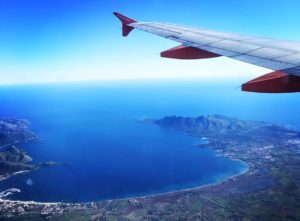Part 2
In part 2 of Mark Whittle’s periodisation for triathletes series, he is delving into the separate phases of periodisation and discussing why (and how) they are relevant to triathletes.
Last month, triathlon coach Mark Whittle took an introductory look at periodisation (you can read part one here) macrocycles, mesocycles and microcycles, and the different phases of a macrocycle.
It’s time to take a closer look at those phases and begin to understand why they’re so beneficial to endurance athletes like triathletes.
General preparation: A fundamental part of a large-scale training plan. Depending on the athlete’s fitness levels and the scale of the goal race, this phase could take up 75% of the entire macrocycle. That’s not to say that it’s easy, boring or repetitive. General preparation focuses on cardiovascular training to progressively build a safe base level of fitness through all disciplines. But how we go about this will depend on the athlete’s existing fitness level, sporting background, injuries and imbalances, skill levels and experience. It’s an important part of the training programme which can’t be rushed. From my point of view, it enables athlete and coach to get to know each other and develop habits, routines and communication techniques which will make the coaching partnership successful.
Base fitness: As we move into the base fitness phase, we work on developing the proper level of aerobic fitness for the goal. This will be sport-specific and race specific, too, taking into account distance, terrain and climate. The main aim of the base phase is to progressively build a solid level of fitness so we can safely move on to more intense training. The base phase is likely to incorporate lower intensity training, with distance and duration being ramped up gradually. Training should feel comfortable during this phase, although you will certainly be getting fitter and stronger.
Build phase: Next comes the build phase, which focuses on an increase in training intensity. Here’s where you’ll introduce speedwork across all disciplines, increase volume, and also work on sport-specific skills and drills. The build phase is more intense than the base phase and is likely to leave you feeling tired and challenged. Your body is working hard and constantly adapting to the training stress placed on it during the build phase. As tired as you might be feeling, take comfort from the knowledge that you are massively increasing your body’s capacity for sustained effort at a higher work rate. This is the phase which most athletes find most difficult: physically, mentally, or both! Good coaching support is very helpful during the build phase. I find myself acting as coach, motivator, sounding-board, sports psychologist and cheerleader!
Peaking: The peaking phase is short but very important. It comes just before the all-important race which you’ve been focusing on for so long now. The length of your peaking phase will be dictated by the type of race, but will include training sessions designed to increase your anaerobic threshold so you can work at higher intensity during the race, accelerate when needed and manage lactic build up. You’ll also concentrate on race-specific skills such as turning and transitions, nutrition and racing strategies, recovery and tapering as well as optimising sleep, hydration and health.
The race: This is a blog post in itself, but suffice to say that your race is counted as a phase in your macrocycle.
Recovery phase: After the race, comes recovery. Again, the specifics of this phase will be dictated by the duration and distance of the race and other factors such as racing intensity, travelling and how you feel after the event. This is a phase where we can play it by ear to an extent. The focus is on recovery for the body and mind.
Transition phase: The final phase of any periodised training programme is transition. Although this comes after the race, it’s not to be overlooked. A proper, planned transition phase will not only make your next block of training more successful but will go a long way towards warding off the post-race blues. As a coach, I work closely with triathletes during this transition period to ensure that they rest and recover, rediscover important balance in life outside sport, and move on to their next goal with a healthy body and mind.
In Mark’s third and final blog about periodisation, he’ll look at how to put all this theory into action so you can benefit from a periodised training approach. If you’ve got any questions for Mark, tweet us @pedalcover using #AskMark









